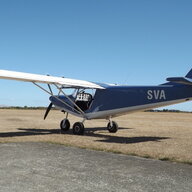Oskar, to answer your question regarding the engine: whether you would be required to do a total overhaul depends on local legislation, so ask your local microlight club, they will know the answer to that one.
Apart from that, I think the reason you are not getting a lot of response here is that it is impossible to know the quality and value of an aircraft from a distance. So it may be a hangar queen, beautifully built and maintained, or it may be an absolute dog, poorly built and maintained. And the only way to tell the difference is to have someone knowledgeable look at it: ideally someone familiar with riveted aluminium skinned aircraft of this sort.
This is absolutely not like buying car: aircraft are very lightly built, and microlights especially so. The aluminium skin has lap joints, which are potential areas of corrosion as they can trap moisture and contamination. And you will certainly not be able to 'see' such corrosion without close and careful inspection. Also be aware that the Savannah comes in kit or factory built form, and kit builds may vary greatly in quality, depending on the abilities of the builder.
So, what do I think?
I think it could be a nice aircraft if it is well built and is in good condition. Though I would be very wary about the floats, and as Nev said if it has been anywhere near salt water I would not consider it: the water will have got into the skin laps, and there will be corrosion there that cannot be fixed. And this may be a problem even on fresh water.
I think it could also be a poorly built or maintained aircraft, in which case the cost of bringing it back to good condition could be many times what it is worth.
As Nev said: get a good independent check. Always.




